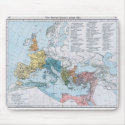Hillforts - A fan site
.
Sometimes you have to press enter/ return key, on your keyboard on the address bar to go to a page after you pressed on it's link.
Wall: This website talks of famous wall structures.
Hardian's wall
Hadrian's Wall is a stone and turf fortification built by the Roman Empire across the north of England to prevent military raids by the tribes of Scotland to the north, to improve economic stability and provide peaceful conditions in the Roman province of Britannia to the south, and to define the frontier of the Empire physically. Also to separate the unruly Selgovae tribe in the north from the Brigantes in the south and prevent them from union.
Great Wall of China
The Great Wall of China is an ancient Chinese fortification built from around 200 BC and strengthened from the 14th century until the 17th century, during the Ming Dynasty, in order to protect the Ming empire from raids by Mongols and Turkic tribes. It was preceded by several walls built since the 3rd century BC against the raids of nomadic tribes coming from areas in modern-day Mongolia and Manchuria. The Wall stretches over 6,352 km (3,948 miles), from Shanhai Pass on the Bohai Sea in the east, at the limit between China proper and Manchuria, to Lop Nur in the southeastern portion of Xinjiang Uygur Autonomous Region.
Berlin Wall
The Berlin Wall, initially constructed in 1961 and dismantled in the weeks following November 9, 1989, was the most prominent part of the GDR border system and was an iconic symbol of the Cold War. Famous for JFKs famous lines ich bien berliner.
The USA Mexico border wall
The United States–Mexico barrier is several separation barriers to stop illegal immigration into the United States. The fence has deterred illegal entries of Mexican nationals and other Latin Americans illegally entering the United States through Mexico, although in recent years other groups have used this border. The intention of these barriers is to make immigrants to cross the border through more difficult lands, with the assumption that this will deter migration. Some United States/Mexico border scholars have claim these operations are just public relations ploy used to convince U.S. citizens that the border is "secure", while the economy benefits from continuing flow cheap labour across the border. In 2016 Donald Trump ran partly on the agenda of building a wall, although part was to be a fence, parts were built. It became more controversial, both main parties in the USA oppose and supported it to a differing degree. It was even called the Trump wall during his presidency., in terms of a beefed up version of the wall. But Obama, Clinton, Bush and Biden, have smaller scale equivalents.
Wailing wall
The Western Wall or The Kotel, is a retaining wall from the time of the Jewish Second Temple. It is often referred to as the Wailing Wall, or as the al-Buraq Wall. The Temple was the most sacred building in Judaism. Herod the Great built vast retaining walls around Mount Moriah, expanding the small, quasi-natural plateau on which the First and Second Temples stood into the wide open spaces of the Temple Mount seen today.
Saudi Arabia Yemen wall
In a bid to stop arms smuggling and terrorist attacks, Saudi and Yemeni officials met in the 2000s to review plans to build a fence along their frontier. This was affected by the Civil War in Yemen that Saudi and many other lands were heavily involved in.
The Ceuta border fence
A separation barrier between Morocco and Spanish controlled Ceuta. Constructed by Spain, to stop illegal immigration and smuggling.
Anastasian Wall
The Anastasian Wall (Turkish: Anastasius Suru) or the Long Walls of Thrace is an ancient, stone and turf fortification located 65 km west of Istanbul, built by the Byzantines during the late 5th century. Originally some 56 km long, it stretches from Evcik Iskelesi, in the Black Sea coast, across the Thracian peninsula to the Sea of Marmara at 6 km west of Silivri. The wall was part of an additional outer defence system for Constantinople, capital of the Eastern Roman Empire.
Israeli West Bank barrier
The Israeli West Bank barrier is a physical barrier being constructed by Israel consisting of a network of fences with vehicle-barrier trenches (95%) and walls (5%).
Offa's Dyke is a massive earthwork, following some of the current border between England and Wales. In places, it is up to 65 feet (20 m) wide and 8 feet (2.5m) high. In the 8th century it formed a border between the Anglian kingdom of Mercia and the Welsh kingdom of Powys. The best preserved bits are at places like Clun in England, but which used to be where the border was. The border does flow very close to the Offa's Dyke line, and even to the 16th Century it was a dividing line of language boundaries, indeed even to a lesser extent the 19th Century. It does not go all along the border. In the North Wat's Dyke is often the border, and in the south it is often rivers. There are a number of other connected dykes like Whitford Dyke which was in the North West of Wales, which did not have a long effect as of a regrowth of Welsh kingdoms against Saxon moves. There were also many other dykes built by the saxons such as the Devil's and Grim;s dykes between different Saxon kingdsoms and some in South West England where they were advancing into West British territory.
Antonine Wall
The Antonine Wall is a stone and turf fortification, built by Romans across what is now the central belt of Scotland.
Construction of the Antonine Wall began around 142 CE during the reign of Antoninus Pius, and was completed in 144. The wall stretches 60 kilometres (37 miles) from Old Kirkpatrick in West Dunbartonshire on the Firth of Clyde to Bo'ness, Falkirk, at the Firth of Forth. The wall was intended to replace Hadrian's Wall 160 km (100 miles) to the south, as the border for Britannia, but while the Romans established temporary forts and camps north of the wall, they could not conquer the Caledonians, and the Antonine Wall suffered attacks.
Walls of Constantinople
The Walls of Constantinople are a series of stone walls that have surrounded and protected the city Istanbul in Turkey since its founding as Constantinople the capital of the Eastern Roman Empire by Constantine the Great to the present day. With numerous additions and modifications, they are one of the greatest and most complex fortification systems ever built. Initially they surrounded the new city on all sides, protecting it against attack from both sea and land. As the city grew, the famous double line of the Theodosian Walls was built in the 5th century. Although other sections of the walls were less elaborate, when well manned, they were almost impregnable for any medieval besieger, saving the city, and Byzantine Empire with it, during sieges from the Avars, Arabs, Rus', and Bulgars, among others. Only the advent of gunpowder siege cannons rendered the fortifications obsolete, resulting in the final siege and fall of Constantinople to the Ottomans on 29 May 1453. The walls were maintained during the Ottoman Empire, until sections began to be dismantled in the 19th century, as the city modernised, and outgrew medieval boundaries. Despite the subsequent lack of maintenance, many parts survived and are still standing today, a testament to the extraordinary longevity of the Byzantine Empire. A large-scale restoration programme has been under way in the past twenty years, that allows the visitor to appreciate their imposing original appearance.
Belfast Peace lines
The Peace Lines are a series of separation barriers ranging in length from a hundred yards to over three miles, separating Protestant and Catholic neighbourhoods in Belfast, Londonderry and elsewhere in Northern Ireland. The purpose of the barriers is to minimize intercommunal sectarian violence between Protestants and Catholics.
The barriers themselves consist of iron, brick, steel walls up to 25 feet high, topped with metal netting. They have gates manned by police, which allow passage in day.
The barriers were constructed in early 1970s, following the outbreak of "The Troubles". Originally few in number, they have multiplied over the years, from around 20 in the early 1990's to 40 today; in total they stretch over 13 miles.
Atlantic wall
The Atlantic Wall was an extensive system of coastal fortifications built by the German Third Reich during the World War II along the western coast of Europe (1942-44) to defend against an anticipated British -American liberation of the continent.
Basel City Walls
The Basel City Walls are a former complex of walls in the central part of the Swiss city of Basel. The first city wall has been completed around 1080 under bishop Burkhard von Fenis. A newer wall has been constructed around 1230, the Inner Wall. In 1362 the construction of a larger wall complex began due to the city's extension; the wall has been completed in 1398, which is known as the Outer Wall. In 1859 the city's executive decided to break down the wall and its gates.
Maginot line
A line built to protect France from Germany. Yet the NAZIs went around the wall. But eventually the NAZIs were defeated.
Why build a wall?
The most famous wall structures tend to have been built to prevent civilians from either escaping or entering a new nation, or to defend your nation, or as important symbolic structures. Machiavelli suggested in the prince that no wall can be built which can be defended against invasion as eventually it would be broken through. Often a wall just encourages inflexible defences, and a false sense of security. They often cause division and tension.
Many hillforts and oppida have very long walls, or ramparts, as you can see in my articles on the subjects. Plus cities across the world into Medieval times from London to Moscow, and of course India and China and more, had walls surrounding them.

